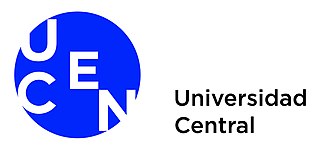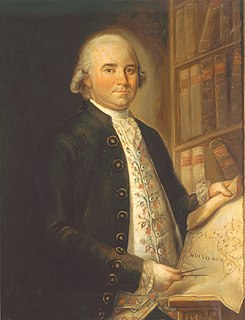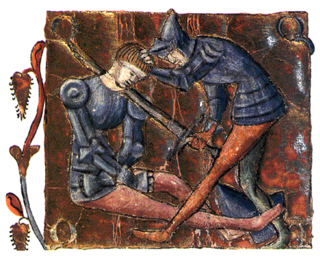
The Canary Islands, also known informally as the Canaries, are a Spanish region and archipelago in the Atlantic Ocean, in Macaronesia. At their closest point to the African mainland, they are 100 kilometres west of Morocco. They are the southernmost of the autonomous communities of Spain. The islands have a population of 2.15 million people and they are one of the outermost regions of the European Union.

The Dominican Republic is a country in the West Indies that occupies the eastern five-eighths of Hispaniola. It has an area of 48,670 km2, including offshore islands. The land border shared with Haiti, which occupies the rest of Hispaniola, is 376 km long. The maximum length, east to west, is 390 km from Punta de Agua to Las Lajas, on the border with Haiti. The maximum width, north to south, is 265 km from Cape Isabela to Cape Beata. The capital, Santo Domingo, is located on the south coast.

Hispaniola is an island in the Caribbean that is part of the Greater Antilles. Hispaniola is the most populous island in the West Indies, and the region's second largest in area, after the island of Cuba.

The encomienda was a Spanish labour system that rewarded conquerors with the labour of particular groups of conquered non-Christian people. The labourers, in theory, were provided with benefits by the conquerors for whom they laboured, the Catholic religion being a principal benefit in the view of the Spanish government. The encomienda was first established in Spain following the Christian conquest of Moorish territories, and it was applied on a much larger scale during the Spanish colonization of the Americas and the Spanish Philippines. Conquered peoples were considered vassals of the Spanish monarch. The Crown awarded an encomienda as a grant to a particular individual. In the conquest era of the sixteenth century, the grants were considered to be a monopoly on the labour of particular groups of indigenous peoples, held in perpetuity by the grant holder, called the encomendero, and their descendants.

Gonzalo Fernández de Oviedo y Valdés, commonly known as Oviedo, was a Spanish soldier, historian, writer, botanist and colonist. Oviedo participated in the Spanish colonization of the West Indies, arriving in the first few years after Christopher Columbus, in 1492, became the first European to arrive at the islands. Oviedo's chronicle Historia general de las Indias, published in 1535 to expand on his 1526 summary La Natural hystoria de las Indias, forms one of the few primary sources about it. Portions of the original text were widely read in the 16th century in Spanish, English, Italian and French editions, and introduced Europeans to the hammock, the pineapple, and tobacco as well as creating influential representations of the colonized peoples of the region.
Agüeybaná was the principal and most powerful cacique (chief) of the Taíno people in "Borikén" when the Spanish first arrived on the island on November 19, 1493.

Slavery in the Spanish American colonies was an economic and social institution which existed throughout the Spanish Empire including Spain itself. In its American territories, Spain displayed an early abolitionist stance towards indigenous people although Native American slavery continued to be practiced, particularly until the New Laws of 1543. The Spanish empire, however was involved in the enslavement of people of African origin. Although the Spanish often depended on others to obtain enslaved Africans and transport them across the Atlantic, the Spanish Empire was a major recipient of enslaved Africans, with around 22% of the Africans delivered to American shores ending up in the Spanish Empire.
At the time of first contact between Europe and the Americas, the indigenous peoples of the Caribbean included the Taíno of the northern Lesser Antilles, most of the Greater Antilles and the Bahamas, the Kalinago of the Lesser Antilles, the Ciguayo and Macorix of parts of Hispaniola, and the Guanahatabey of western Cuba. The Kalinago have maintained an identity as an indigenous people, with a reserved territory in Dominica.

Trasmediterránea operates passengers and cargo ferries between mainland Spain and the Canary Islands, the Balearic Islands, and northern Africa's Spanish territories.

Caquetio, Caiquetio, or Caiquetia are natives of northwestern Venezuela, living along the shores of Lake Maracaibo at the time of the Spanish conquest. They moved inland to avoid enslavement by the Spaniards, while their numbers were drastically affected by colonial warfare, as were their neighbours, the Quiriquire and the Jirajara. The Caquetíos were also present in Aruba, Curaçao and Bonaire when these islands were first colonized by Alonso de Ojeda in 1499. The occupants of this region were known as Caquetíos by the Spaniards and their language (Caquetío) belongs to the Arawakan family of languages. The Caquetío and the Jirajara spoke the same language, and their cultures were quite similar. The Arawakan or Caquetío language is termed a "ghost" language because virtually no trace of it survives. Only the name remains, saved in 17th-century texts.

The Captaincy General of Santo Domingo was the first colony in the New World, established by Spain in 1492 on the island of Hispaniola. The colony, under the jurisdiction of the Real Audiencia of Santo Domingo, was granted administrative powers over the Spanish possessions in the Caribbean and most of its mainland coasts, making Santo Domingo the principal political entity of the early colonial period.

The Central University of Chile (UCEN) is the first autonomous private university in Chile, founded in 1982 in Santiago de Chile. It's accredited in the areas of institutional management and undergraduate teaching by the National Accreditation Commission of Chile for a term of four years from December 2017 to December 2021.

Juan Bautista Muñoz was an 18th-century Spanish philosopher and historian.

The Battle of Bairén was fought between the forces of Rodrigo Díaz de Vivar, also known as "El Cid", in coalition with Peter I of Aragon, against the forces of the Almoravid dynasty, under the command of Muhammad ibn Tasufin. The battle was part of the long Reconquista of Spain, and resulted in a victory for the forces of the Kingdom of Aragon and the Kingdom of Valencia.
White Dominicans are Dominicans of predominant European descent. They were 16.1% of the Dominican Republic's population, according to the last population census (1960) in which race was queried. The majority of white Dominicans are descendants from the first European settlers to arrive in Hispaniola and have ancestry of the Spanish and French who settled in the island during colonial times, as well as the Portuguese who settled in the 17th and 18th centuries. Many others also descend from Italians, Dutchmen, Germans, Hungarians, Scandinavians, Americans and other nationalities who have migrated between the 19th and 20th centuries. Similar to the rest of the Hispanic Caribbean, the majority of Spaniards who settled the Dominican Republic came from southern Spain, Andalusia and the Canary Islands, the latter of whom are of partial North African Guanche descent.
Areíto or areyto was a Taíno language word adopted by the Spanish colonizers to describe a type of religious song and dance performed by the Taíno people of the Caribbean. The areíto was a ceremonial act that was believed to narrate and honor the heroic deeds of Taíno ancestors, chiefs, gods, and cemis. Areítos involved lyrics and choreography and were often accompanied by varied instrumentation. They were performed in the central plazas of the villages and were attended by the local community members as well as members of neighboring communities.

The Spanish conquest of the Muisca took place from 1537 to 1540. The Muisca were the inhabitants of the central Andean highlands of Colombia before the arrival of the Spanish conquistadors. They were organised in a loose confederation of different rulers; the psihipqua of Muyquytá, with his headquarters in Funza, the hoa of Hunza, the iraca of the sacred City of the Sun Sugamuxi, the Tundama of Tundama, and several other independent caciques. The most important rulers at the time of the conquest were psihipqua Tisquesusa, hoa Eucaneme, iraca Sugamuxi and Tundama in the northernmost portion of their territories. The Muisca were organised in small communities of circular enclosures, with a central square where the bohío of the cacique was located. They were called "Salt People" because of their extraction of salt in various locations throughout their territories, mainly in Zipaquirá, Nemocón, and Tausa. For the main part self-sufficient in their well-organised economy, the Muisca traded with the European conquistadors valuable products as gold, tumbaga, and emeralds with their neighbouring indigenous groups. In the Tenza Valley, to the east of the Altiplano Cundiboyacense where the majority of the Muisca lived, they extracted emeralds in Chivor and Somondoco. The economy of the Muisca was rooted in their agriculture with main products maize, yuca, potatoes, and various other cultivations elaborated on elevated fields. Agriculture had started around 3000 BCE on the Altiplano, following the preceramic Herrera Period and a long epoch of hunter-gatherers since the late Pleistocene. The earliest archaeological evidence of inhabitation in Colombia, and one of the oldest in South America, has been found in El Abra, dating to around 12,500 years BP.

The Four Doors site, also known as Montaña Bermeja, 'Vermillion Mountain', is a complex of caves in the south of the municipality of Telde, Gran Canaria.
The following is a timeline of the history of the city of Las Palmas, Canary Islands, Spain.
In the run up to the 2015 Spanish local elections, various organisations carried out opinion polling to gauge voting intention in local entities in Spain. Results of such polls for municipalities in the Valencian Community are displayed in this article. The date range for these opinion polls is from the previous local elections, held on 22 May 2011, to the day the next elections were held, on 24 May 2015.















